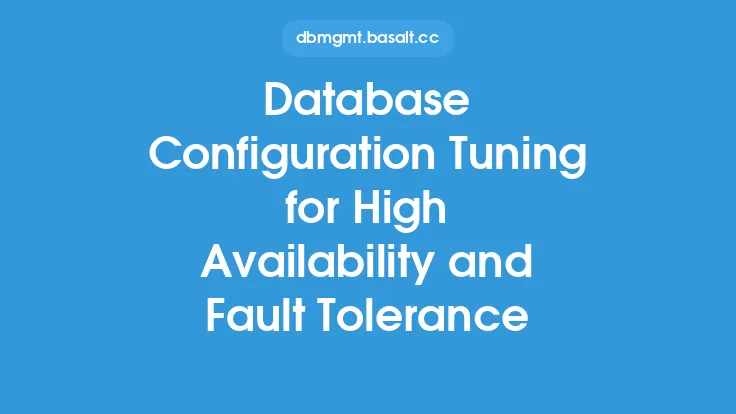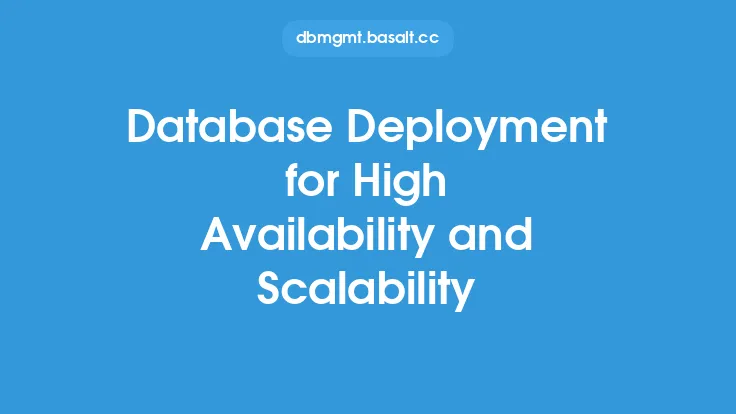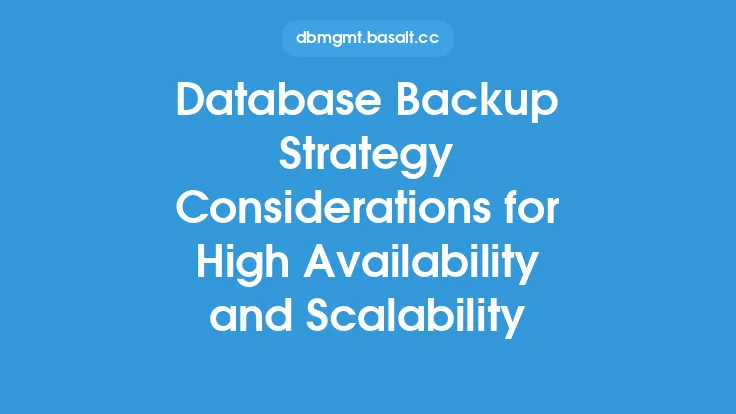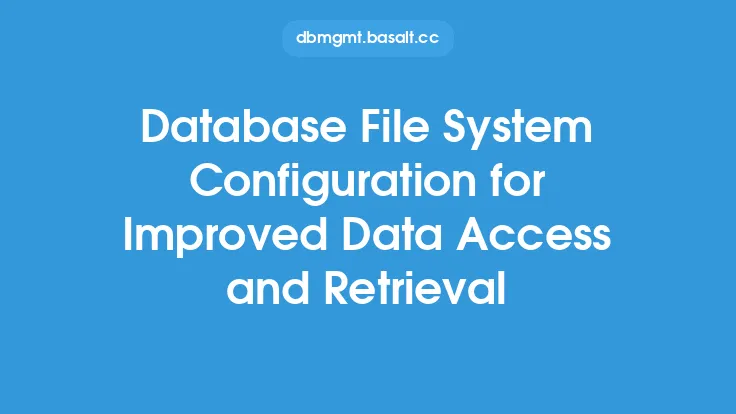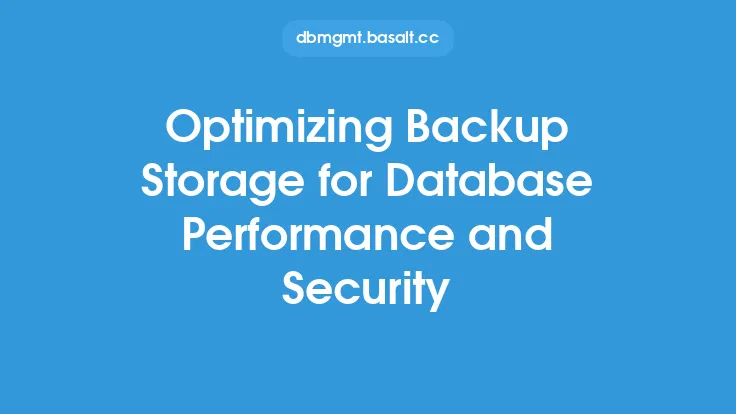When it comes to database configuration, high availability and reliability are crucial aspects to consider. A well-configured database can ensure that data is always accessible and up-to-date, even in the event of hardware or software failures. In this article, we will delve into the world of database configuration for high availability and reliability, exploring the various techniques and strategies that can be employed to achieve these goals.
Introduction to High Availability and Reliability
High availability refers to the ability of a database to remain operational and accessible at all times, with minimal downtime or interruptions. Reliability, on the other hand, refers to the ability of a database to consistently perform its intended functions, without errors or data corruption. To achieve high availability and reliability, database administrators must carefully consider a range of factors, including hardware, software, networking, and data storage.
Database Clustering for High Availability
One popular technique for achieving high availability is database clustering. Clustering involves grouping multiple database servers together to form a single, logical database. Each server in the cluster, known as a node, can operate independently, but they work together to provide a unified database service. If one node fails, the other nodes can take over, ensuring that the database remains available. There are several types of clustering, including shared-disk clustering, shared-nothing clustering, and distributed clustering. Shared-disk clustering involves multiple nodes sharing a common disk storage system, while shared-nothing clustering involves each node having its own disk storage. Distributed clustering, on the other hand, involves nodes that are geographically dispersed, often across multiple data centers.
Replication and Mirroring for Reliability
Replication and mirroring are two techniques that can be used to improve database reliability. Replication involves maintaining multiple copies of data, often in different locations, to ensure that data is always available, even in the event of a failure. Mirroring, on the other hand, involves maintaining a duplicate copy of data, often in real-time, to ensure that data is always up-to-date. There are several types of replication, including master-slave replication, multi-master replication, and peer-to-peer replication. Master-slave replication involves one primary node, known as the master, and one or more secondary nodes, known as slaves. Multi-master replication, on the other hand, involves multiple primary nodes, each of which can accept updates. Peer-to-peer replication involves all nodes being equal, with each node able to accept updates and replicate data to other nodes.
Load Balancing and Failover for High Availability
Load balancing and failover are two techniques that can be used to improve database high availability. Load balancing involves distributing incoming traffic across multiple nodes, to ensure that no single node becomes overwhelmed. Failover, on the other hand, involves automatically switching to a standby node, in the event of a failure. There are several types of load balancing, including round-robin load balancing, least connections load balancing, and IP hashing load balancing. Round-robin load balancing involves distributing traffic evenly across all nodes, while least connections load balancing involves directing traffic to the node with the fewest active connections. IP hashing load balancing, on the other hand, involves directing traffic to a node based on the client's IP address.
Data Storage and Backup for Reliability
Data storage and backup are critical components of a reliable database configuration. Data storage involves selecting the appropriate storage media, such as hard disk drives, solid-state drives, or flash storage. Backup, on the other hand, involves creating copies of data, to ensure that data can be recovered in the event of a failure. There are several types of backup, including full backups, incremental backups, and differential backups. Full backups involve creating a complete copy of all data, while incremental backups involve creating a copy of only the data that has changed since the last backup. Differential backups, on the other hand, involve creating a copy of all data that has changed since the last full backup.
Networking and Connectivity for High Availability
Networking and connectivity are critical components of a highly available database configuration. Networking involves selecting the appropriate network topology, such as a local area network (LAN), wide area network (WAN), or virtual private network (VPN). Connectivity, on the other hand, involves ensuring that all nodes can communicate with each other, and with clients. There are several types of networking protocols, including TCP/IP, HTTP, and FTP. TCP/IP is a suite of protocols that includes transmission control protocol (TCP) and internet protocol (IP), while HTTP is a protocol used for transferring data over the web. FTP, on the other hand, is a protocol used for transferring files over a network.
Monitoring and Maintenance for Reliability
Monitoring and maintenance are critical components of a reliable database configuration. Monitoring involves tracking database performance, to identify potential issues before they become critical. Maintenance, on the other hand, involves performing routine tasks, such as backups, updates, and upgrades, to ensure that the database remains healthy and stable. There are several types of monitoring tools, including database management systems (DBMS), monitoring software, and logging tools. DBMS involves using the database's built-in management tools, while monitoring software involves using third-party tools to track performance. Logging tools, on the other hand, involve tracking database activity, to identify potential issues.
Best Practices for High Availability and Reliability
To achieve high availability and reliability, database administrators should follow several best practices. These include designing a robust database architecture, selecting the appropriate hardware and software, implementing replication and mirroring, using load balancing and failover, and monitoring and maintaining the database. Additionally, database administrators should ensure that all nodes are properly configured, and that all data is properly backed up. By following these best practices, database administrators can ensure that their database is always available, and that data is always reliable.
Conclusion
In conclusion, database configuration for high availability and reliability is a critical aspect of database implementation. By using techniques such as clustering, replication, and mirroring, database administrators can ensure that their database is always available, and that data is always reliable. Additionally, by following best practices, such as designing a robust database architecture, selecting the appropriate hardware and software, and monitoring and maintaining the database, database administrators can ensure that their database is always healthy and stable. By prioritizing high availability and reliability, database administrators can ensure that their database is always meeting the needs of their users, and that data is always safe and secure.
